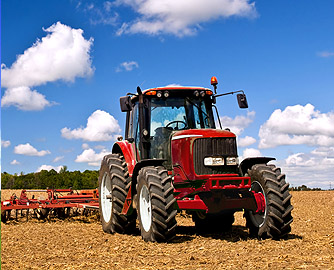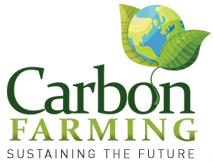| | < back to Opportunites
The USDA have listed a number of options for increasing the ability of the soil to act as a carbon sink. (Tilman)
1. Reduce ploughing
Minimizing tillage reduces oxygen availability in the soil, which in turn reduces the microbial decomposition of organic matter which releases CO2. Reicosky et al measured CO2 released from soil after tilling wheat stubble with various implements. Over a 19 day period, one pass of a plough caused five times as much CO2 to be lost from the soil compared to untilled plots. More organic matter was oxidized in 19 days than was produced all year in wheat straw & roots. Soil organic matter has increased by 1120kg/ha/yr in some no-till studies equivalent to 661kg/ha carbon stored /year, (compared to the 17-22kg/ha carbon that was used to produce the crop). A substantial fuel saving of around 50% can be experienced. Soils have been depleted of organic matter by conventional farming. At the University of Illinois, the Morrow Plots had 40 tons of organic matter/ acre in 1903. By 1973 this had fallen to 20t/ac under continuous cropping.
2. Improve soils by using organic and sustainable management practices
In USA, UK, New Zealand, Lockeretz et al, Tilman et al Reganold et al respectively, have shown in long term comparative studies that such systems improve soils through accumulation of organic matter & soil carbon with accompanying improvements in microbial activity. Examples of such practices include;
a) using mixed rotations including cover crops, green manures & inter cropping
b) minimising summer fallow periods with no ground cover
c) applying composts & manures.
d) incorporation of leys into the rotation
e) improvement of pasture through grazing & vegetation management.
At the Rodale Institute in Pennsylvania organic systems with legumes and/or animal manures increased soil carbon from 1.8% to 2.4% over 14 years compared to no significant change for conventional systems (Petersen et al 2000)
3. Convert arable land to agroforestry
The Intergovernmental Panel on Climate Change (IPCC) concluded that this land use change had the greatest potential for sequestering carbon, as there is a benefit from both increased soil organic matter and above ground woody biomass. If the wood is burnt instead of a fossil fuel such as coal, there is a double benefit. According to the USDA National Agroforestry Centre, under such systems soil carbon can increase by 6.6tC/ha/yr over a 15 year rotation and wood by 12-22t C/ha/yr
4. Convert arable land to woodland
Removal of arable land from annual crop production for tree planting & silvopastoral systems where animals graze beneath trees, are obviously radical land use changes. Such systems may be attractive on the poorest 20% of farm soils. Producing timber, where 50% of plant dry matter is carbon, equates to about 250kg C /m3. A forest that is growing will always be taking up more CO2 than it releases. Different forestry systems will exhibit different rates of carbon uptake and long-term levels of carbon storage depends on a combination of the species, site conditions & management, unique to each. For carbon offset purposes, Future Forests™ uses 5 trees per tonne of carbon.
Agriculture does contribute to carbon and GHG emissions, by direct & indirect use of fossil fuels and by excessive cultivation. Livestock & waste products are also sources of CH4 and N2O emissions which will also have a negative impact.
However it has been calculated using similar ranges of price/ T of C & accumulation rates to those used in the US that carbon sequestration could bring arable & grassland farmers between £18m & £147m/year. (Tilman 2000) The Government rejected payment for carbon sequestration in any of the Environmental Stewardship programmes regardless of the evidence, that agricultural systems which result in increased carbon sequestration are more sustainable and are more bio-diverse and energy efficient. Those Organic farmers who do adopt carbon sequestration will surely benefit and can only add to their green credentials in the eyes of the public.
Carbon Accounting
Measuring and auditing systems are needed.The CLA has developed a tool to measure GHG emissions and carbon storage on-farm called Carbon Aware Land management. DEFRA has excluded the use of carbon sinks in emission trading systems because of concerns regarding project monitoring, ‘additionality’ ( ie projects or systems that would have to be included that would not have done normally by the farmer) and compatibility with international project trading rules. Seller liability is almost unanimously preferred over buyer liability. As a matter of principle the government also prefers to concentrate on emission reduction which must be our first priority.
Carbon neutrality is a growing objective that companies and government are aspiring to. The Governments Office Estate plans to be carbon neutral by 2012 through a combination of reductions and offsets.
< back to Opportunites | |  | |



